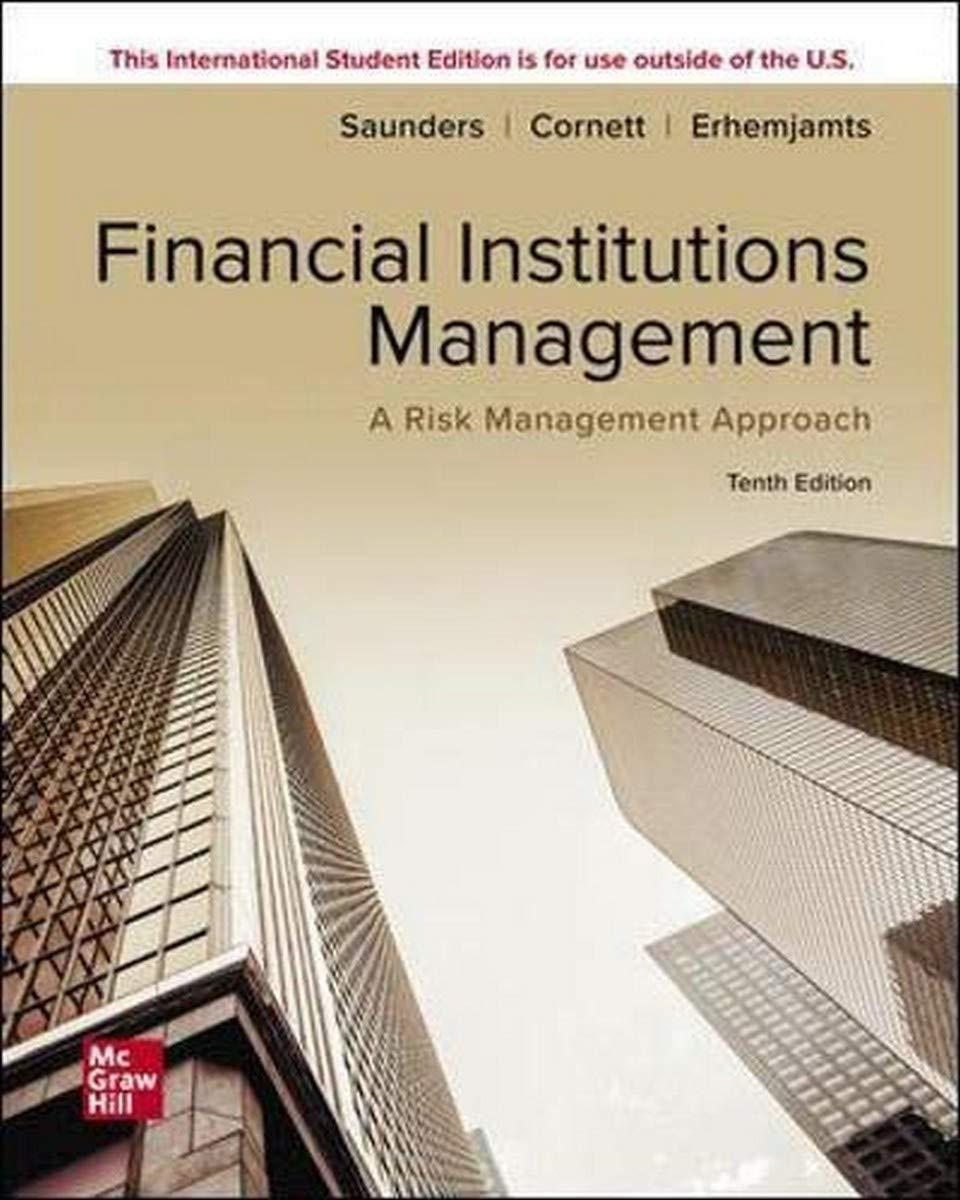Question
Banks would like to have a negative gap if they expect that future interest rates will (increase, decrease, remain unchange) . This means that banks
 Banks would like to have a negative gap if they expect that future interest rates will (increase, decrease, remain unchange) . This means that banks should hold (more, less) interest ratesensitive assets than interest ratesensitive liabilities.
Banks would like to have a negative gap if they expect that future interest rates will (increase, decrease, remain unchange) . This means that banks should hold (more, less) interest ratesensitive assets than interest ratesensitive liabilities.
The duration formula implies that if interest rates decrease, duration will(increase, decrease) . The duration gap formula implies that, ceteris paribus, the gap will remain the same, if the interest rate change affects the value of the bank's assets (same way, less, more) than it affects the value of its liabilities.
5. Risk management: Gap analysis vs duration analysis Consider the formula for the interest rate gap: Gap = Amount of IR-sensitive Assets - Amount of IR-sensitive Liabilities This means that banks should hold Banks would like to have a negative gap if they expect that future interest rates will Interest rate-sensitive assets than interest rate-sensitive liabilities. Now consider the formula for the duration gap: Duration gap - Asset Duration - Liability Duration Lability where Asset is the market value of the asset, Liability is the market value of the liability, and duration is the weighted average of times until payment, with their weights proportionate to the present value of the payment: Duration : (1+r! The duration formula implies that if interest rates decrease, duration will The duration gap formula implies that, ceteris paribus, the gap will remain the same, if the interest rate change affects the value of the bank's assets than it affects the value of its liabilities. 5. Risk management: Gap analysis vs duration analysis Consider the formula for the interest rate gap: Gap = Amount of IR-sensitive Assets - Amount of IR-sensitive Liabilities This means that banks should hold Banks would like to have a negative gap if they expect that future interest rates will Interest rate-sensitive assets than interest rate-sensitive liabilities. Now consider the formula for the duration gap: Duration gap - Asset Duration - Liability Duration Lability where Asset is the market value of the asset, Liability is the market value of the liability, and duration is the weighted average of times until payment, with their weights proportionate to the present value of the payment: Duration : (1+r! The duration formula implies that if interest rates decrease, duration will The duration gap formula implies that, ceteris paribus, the gap will remain the same, if the interest rate change affects the value of the bank's assets than it affects the value of its liabilitiesStep by Step Solution
There are 3 Steps involved in it
Step: 1

Get Instant Access to Expert-Tailored Solutions
See step-by-step solutions with expert insights and AI powered tools for academic success
Step: 2

Step: 3

Ace Your Homework with AI
Get the answers you need in no time with our AI-driven, step-by-step assistance
Get Started


